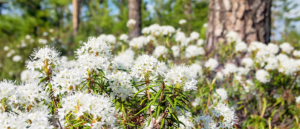
BioTechniques News
Aisha Al-Janabi

A newly revealed role of lncRNAs in the deadly malaria parasite, Plasmodium falciparum, has opened new avenues for targeted therapeutic strategies.
A study led by researchers at the University of California, Riverside (CA, USA) in collaboration with researchers at the University of Washington (WA, USA), Johns Hopkins Bloomberg School of Public Health (MD, USA) and the Wellcome Sanger Institute (Cambridgeshire, UK) has discovered novel insights on long non-coding RNAs (lncRNAs) in Plasmodium falciparum (P. falciparum). LncRNAs are found to regulate genome structure and gene expression. Understanding the mechanisms that regulate gene expression throughout the life cycle of P. falciparum could aid in the discovery of novel antimalarial therapies.
Malaria continues to be one of the most critical public health issues worldwide and is a leading cause of death and disease in many developing countries. In 2020, an estimated 627,000 people died of malaria, most of whom were young children in sub-Saharan Africa. Among the malaria-causing parasites, the most virulent and deadly is P. falciparum. The prevalent parasite causes enormous impact and costs to individuals, families, communities and nations globally.
To better understand the life cycle of P. falciparum, the team set out to elucidate the localization and subsequently the potential role of lncRNAs in P. falciparum. They used deep sequencing and nascent RNA expression profiles to identify 1,768 lncRNAs, 718 of which had never been identified before. To evaluate the essentiality of the novel lncRNAs identified, the researchers used piggyBac insertion analysis. They found that some of the novel lncRNAs are key for the parasite’s life cycle progression.
 Compound in herbal remedy could lead to novel antimalaria drugs
Compound in herbal remedy could lead to novel antimalaria drugs
Researchers identify a compound that possesses antimalarial properties in a subarctic medicinal plant used by First Nations.
The team then used RNA fluorescence in situ hybridization (RNA-FISH) and single-cell RNA sequencing (scRNA-seq) to validate the subcellular localization and stage-specific expression of several lncRNAs. They found one lncRNA – lncRNA-ch14 – that was enriched in gametocytes, and, using the CRISPR-Cas9 editing tool, discovered that it partially regulates sexual differentiation and sex determination.
“We can now target specific lncRNAs to stop P. falciparum’s life cycle progression, including sexual differentiation,” said lead researcher Karine Le Roch (University of California, Riverside). “We found evidence that lncRNAs are distributed in distinct cellular compartments in P. falciparum. Depending on their localization, they are found to play important roles in regulating gene expression and the malaria parasite’s life cycle progression.”
The results of the study could help develop new antimalarials targeting lncRNAs. “Our findings bring new insight into the role of lncRNAs in P. falciparum’s capacity to cause malaria, gene regulation, and sexual differentiation. This can open up new avenues for targeted approaches towards therapeutic strategies against P. falciparum that are aimed at stopping the parasite’s life cycle progression and its sexual differentiation and blocking the transmission of the parasite into mosquitoes,” concluded Le Roch.
The post Novel insights into the role of lncRNA in malaria appeared first on BioTechniques.
Powered by WPeMatico
